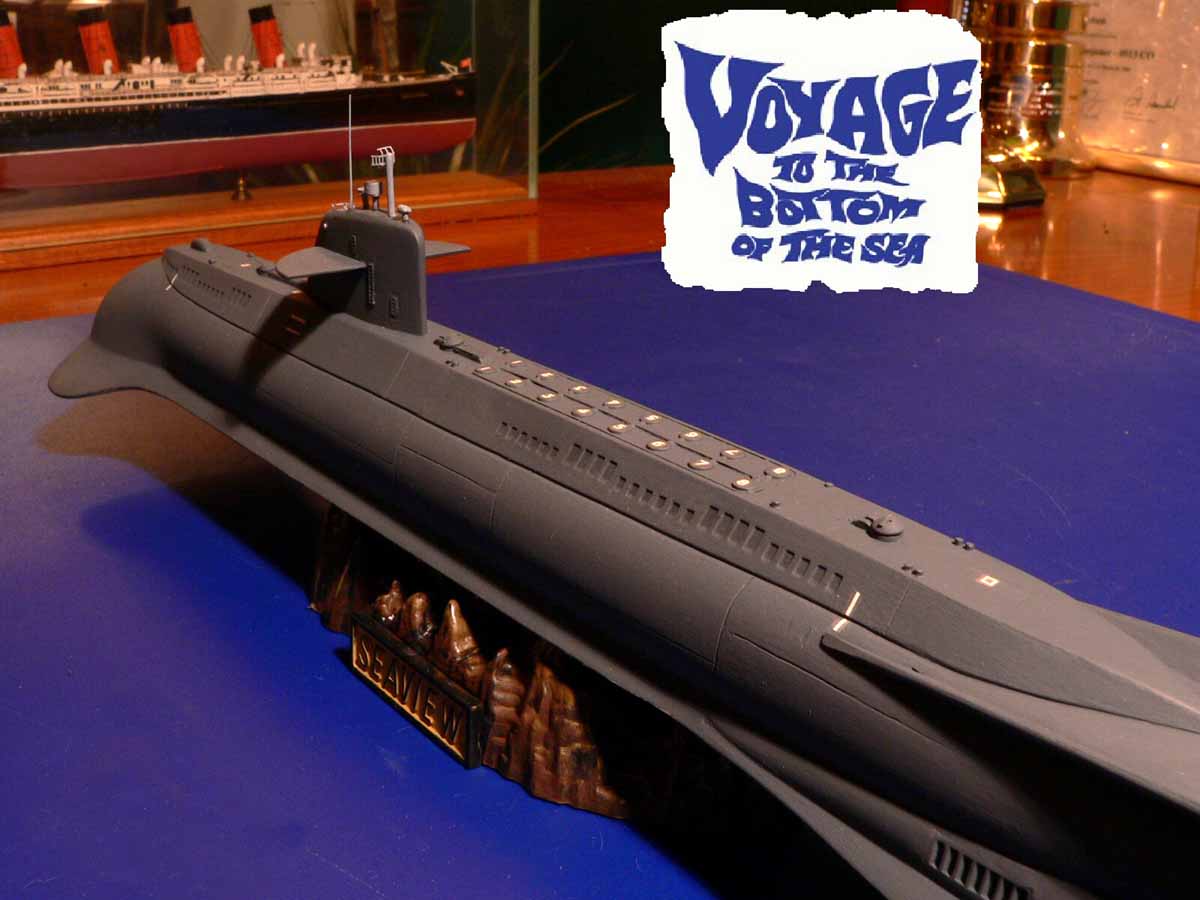by Atle Ellefsen

1/570 SSRN Seaview (Polar Lights)

It is the year 1985. A mile below the surface of the Pacific Ocean, a gigantic nuclear submarine the world has never seen slips through the water at 35 knots. Built in extreme secrecy, she is the free world's most powerful weapon against all evil; from megantic sea monsters to global fires. But where are the hockey hair-dos, the pastel leg warmers and….. Nick Kershaw? Well, who knew about that in 1963! Bringing back fond memories, the Polar Lights SSRN Seaview kit depicts one of the most distinctive features of the 1960’s science fiction era. The star of Irwin Allen’s TV series and movie “Voyage to the Bottom of the Sea” (1964 to 1968), the brainchild of stone-tough sea dog Admiral Harriman Nelson, (Richard Baseheart), and commanded by tall and dark Captain Lee Crane (David Hedison). I could not afford to miss one weekly show back then. But I never understood what they were saying. I lived in Japan and everything was dubbed. It was “Admiraru Neruson” and “Kaputen Kurenu” on this “Sea-byu”.
I saw the movie recently, which was a mixed experience even though I understood what they were saying. This kit was originally released by Aurora, and renders the Seaview according to the 1961 movie version, with the eight front windows – instead of the two semi-divided panes on the later TV version. The scale of the model is unclear. The overall length is quoted between 300 feet to around 620 feet; the latter the most likely. The interior shots show rooms the size of cathedrals. Even the crew’s berthing quarters could accommodate an aircraft workshop and host an officers’ ball. So that would bring the kit to scale about 1:570. The Seaview had bay doors underneath her fore part, opening into a dock housing a magnificent flying sub. This sub is included in other kits but not in Polar Light's version.
My wife is astonished. How is it possible to spend week after week on a small plastic piece with a handful of parts and two shades of paint? But the Seaview was a lot of work. The hull was scribed, water intakes and 5-bladed props were inserted in the jet pylons; the fan tail, rudders and fins were slimmed, filling and sanding joints and crevices. I shaved off the moulded sail doors and added PE parts, including steps, gratings, hatches and a radar 60’s style. Other add-ons were fin tail lights, mooring bollards and decals from spares box applied with artistic licence. The front window fit is a major challenge and involved masking and re-masking until reasonably flush with hull. The original hull colour varies somewhat on photos from the sets and the episodes; I decided to airbrush with WEM Colourcoat’s US navy blue, bottom with haze grey. An incredibly fun kit to build!
A great conceptual design but a naval architectural disaster and a hydrodynamic headache, she would be a nightmare to navigate and a gas guzzler deluxe, if one can speak in those terms of a nuclear sub. The only efficient control surfaces are the sail fins and water jet rudders. The remaining “designer” appendices only increase wetted surface hence frictional resistance. The manta ray bow wings would, in a sharp vertical manoeuvre, produce serious turbulence and uncontrollable lift. The huge tail fins would just delay rudder effect, and create a scary rotational side-effect. How Captain Crane managed to steer that sub is truly impressive. How Admiral Nelson managed to bribe the engineers to sweep the sea keeping test results under the carpet in order to sell a cool design at taxpayers’ expense is downright questionable. The electronic equipment could however be operated by a child. The consoles had big blinking light bulbs and conspicuous signs reading “Radar Screen” and “Torpedo Launch Button”. Finally, it would be fantastic to know how the full-height front windows were fabricated - to carry a total sub-sea load of 7000 tonnes each - without being 5 feet thick…....
Attached is also 2 photos of the 1:700 Nichimo kit, originally bought in Motomachi street, Yokohama, Japan in 1967 when I was 10 years old. Intact after 39 years!
Finally, there is a big model of the Seaview onboard the Radiance of the Seas, in the “Seaview Café”. Working for RCCL at the time, I had the privilege of commissioning this model from Maritime Replicas, as a fun association. Actually the theme of the café is Hemingway but the architect fired on the model idea when I told him the story of the “Voyage to the Bottom of the Sea”. So there she is, sailing the seven seas again.
